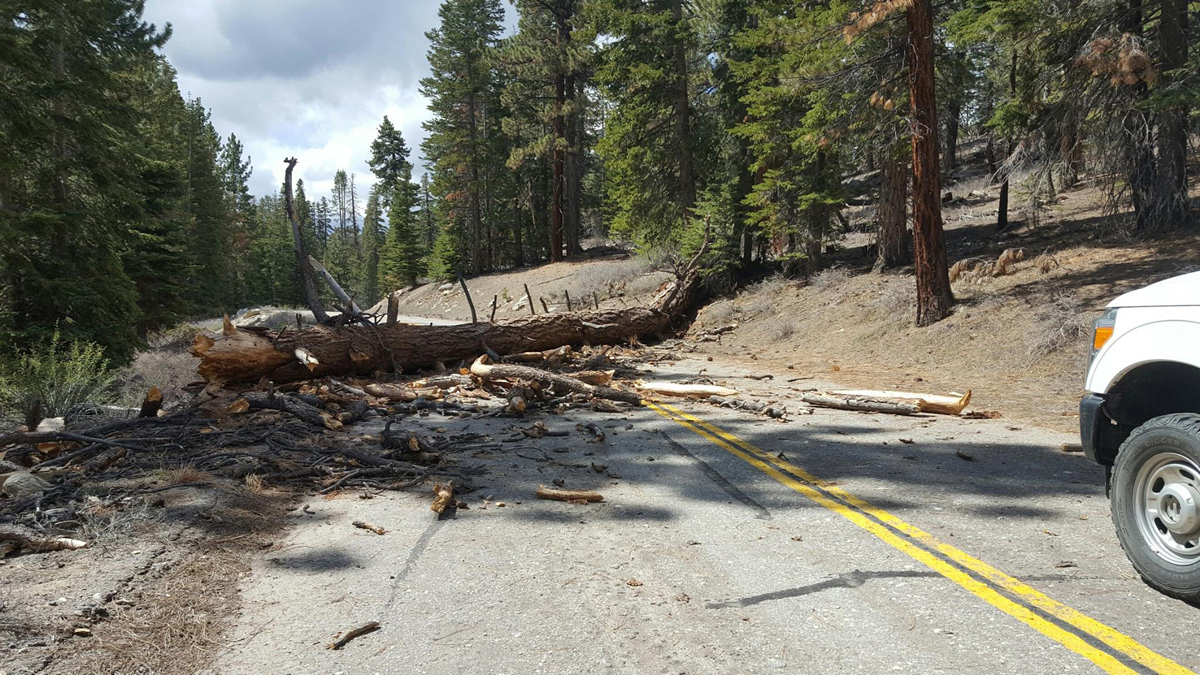
Sequoia National Forest
May 17, 2016 - Trees stressed from drought, increasing temperatures and bark beetles are dying in numbers never seen before. Dead trees can fall unexpectedly and are creating dry fuels for wildfires. Be aware when traveling in your National Forests—always plan ahead and know your escape routes!
A "hazard tree" is a tree that has a structural defect that makes it likely to fail in whole or in part. Falling trees are a hazard when traveling or recreating in the forest. These hazard trees pose risks to visitors, employees and contractors; it is critical that everyone watch out for falling trees.
Watch Out!
Following these guidelines will help forest visitors avoid risks.
- Be aware of your surroundings as trees can fall without warning. Avoid dense patches of dead trees when it's windy or following a snowstorm when branches are covered with snow.
- Trees without needles, with red or brown needles, with reddish-brown pitch tubes (½-¾ inch blobs of sap on the outside of a tree trunk), flaking bark, or holes in the bark caused by woodpeckers may be infested with bark beetles or other insects and may fall at anytime.
- Look up while on trails, especially when it’s windy. Stay out of the forest when there are strong winds that could blow down trees. If you are already in the forest when winds kick up, head to a clearing out of reach of any potential falling trees.
- Park close to a main road rather than on a spur or one-way section when driving in remote areas of the forest to avoid being trapped if a tree falls across the road.
- Place tents and park vehicles in areas where they will not be hit if trees fall.
- Bring an ax or a chainsaw to remove fallen trees from roads in case you become trapped.
- Do not rely only on cell phones for safety as there is no coverage in many areas of the national forest.
- Know before you go. Check your destination forest’s website for alerts and warnings or check in at the local ranger station to ensure your favorite recreation areas are open.
Source: USDA








